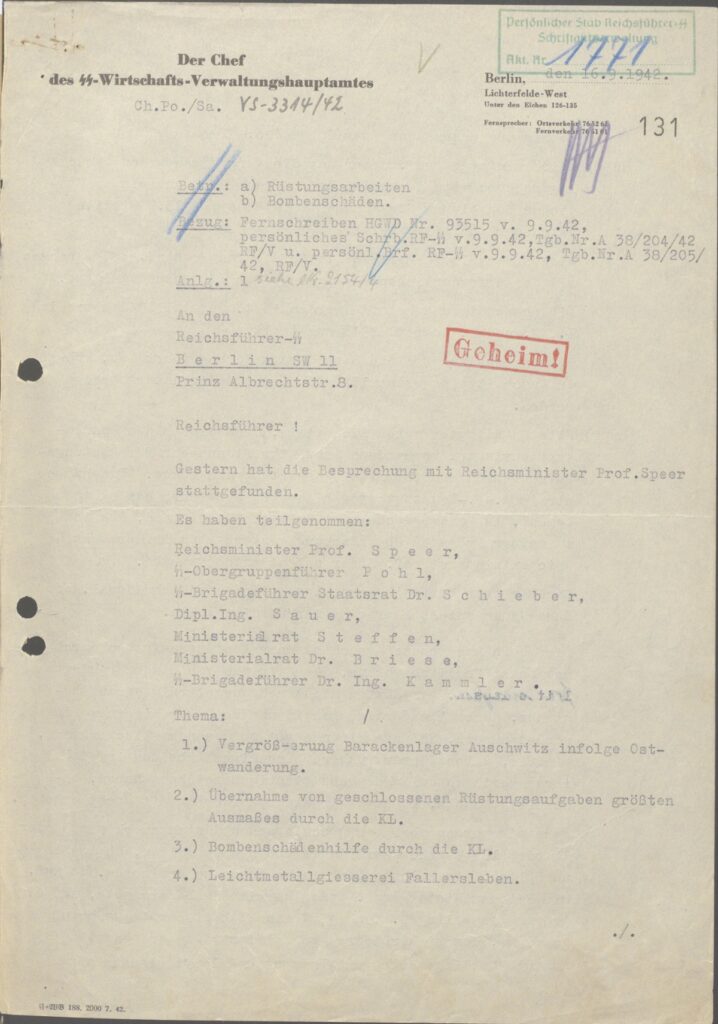Stubble wrote: ↑Tue Aug 26, 2025 12:12 am
Regarding the encyclopedea from USHMM, it is very hard for me to read from a book that uncritically cites literal Pravda and take it seriously.
The bend on these materials is unbearable.
I like my history like I like my news, factually heavy and neutrally critical.
Just one guy's perspective though.
Pravda is cited twice in Vol II/B - both times indicating that the Soviet paper published a wartime story on an 'action', once for Smolensk before liberation, once for a town in the Caucasus (Yessentuki) after liberation. There are two post-liberation citations of Krasnoarmeiskaia Pravda. In none of these cases is the newspaper article the main source - there are always either ChGK or JAFC sources as well, sometimes both.
The Smolensk case presented information neutrally - it indicates the range of estimates for the ghetto liquidation action in July 1942 having stated in the main text 'an estimated 1,200 to 2,000 people were shot'. Pravda wasn't even the highest estimate. The rest of the entry indicated a contemporary source (from a collaborator newspaper) with a floor figure and noted that Trupp Smolensk of Einsatzgruppe B reported 2,439 liquidations in September 1942 - which is a typo/slip for 2430 'Sonderbehandelten' from the end of August 1942 (16-31 August report). At the end of February 1942, just after Trupp Smolensk became autonomous, it reported only 122 'Sonderbehandelten'.
The entry didn't cite contemporary German documents confirming the collaborator newspaper from autumn 1941 that there was a ghetto in Smolensk (before the action) or the sorting out of property from the ghetto (after the action).
The entry didn't make clear that ChGK located the mass grave site and exhumed part of it to verify the type of victims (civilians) and the methods used (shootings, but also corpses without bullet wounds, which it concluded had been killed in the gas van reported by eyewitnesses). Reading enough other entries would confirm this was common practice, since exhuming and counting an infinity of mass graves down to the last corpse would have been quite something if done every time, and the Soviets didn't even do this for graves they identified near POW camps.
By conventional standards of evidence, i.e. regarding *other* historical massacres, this is quite tight, since *other* historical massacres also generate estimate ranges and may not have been investigated entirely precisely,
if at all.
By revisionist standards of evidence, you may wish to skip ahead to total negation without trying to explain anything at all, except there clearly was a ghetto in Smolensk. The German documents just mentioned were captured by the Americans, and they also captured a copy of the Einsatzgruppe B report for 16-31 August 1942 (as did the Soviets - it survived in two copies).
You can consider what the implications are of the city administration of Kharkiv registering 10,271 Jews being transferred to the ghetto followed by reports from various sources indicating the ghetto had disappeared and the inmates killed at Drobitskii Yar. That's also a good test of standards of evidence, since as with Smolensk there is no 'certifying' bodycount report by the perpetrators, but unlike Smolensk no ceiling bodycount, as with Smolensk a partially exhumed mass grave. As with Smolensk, but not noted here, the massacre was reported in the Soviet press within months - in Izvestiia at the end of February 1942.
https://muse.jhu.edu/document/3471
Maybe reflect on how many massacres have taken place in recent history without the perpetrators writing anything down, and how globally, it is rather unusual to get perfect forensic documentation.
The USHMM encyclopedia didn't incorporate all of the contemporary Soviet press reports *or* intelligence reports. Nor did it cite the Polish underground reports or Polish Jewish underground reports systematically. Incorporating both would find many cases where the contemporary non-German figures were very similar to the numbers in German documents, and
just as with big air raids like the bombing of Hamburg, some exaggerations reported as hearsay.
What one can find in the encyclopedia are further cases like Kharkiv, where local authorities registered the number of Jews in a ghetto prior to any 'action'. And there are more such examples. Timothy Snyder contributed the encyclopedia entry for Łuck (Lutsk, Luzk) in Volhynia; he did not cite multiple documents from January-February 1942 reporting 17,000 Jews in this ghetto. This is part of the broad headcount of 326,000 Jews in Generalkommissariat Wolhynien-Podolien in early 1942, with other figures for key towns in the region also extant in contemporary population registers and contemporary German documents.
Another example is the entry for the Minsk ghetto; it doesn't mention that a German report noted 18,000 native (not deported from the Reich) Jews there in January 1942, before the July 1942 'action' which bombsaway has brought up in recent days, and before the autumn 1942 German reports counting 9500 Jews in the ghetto.

